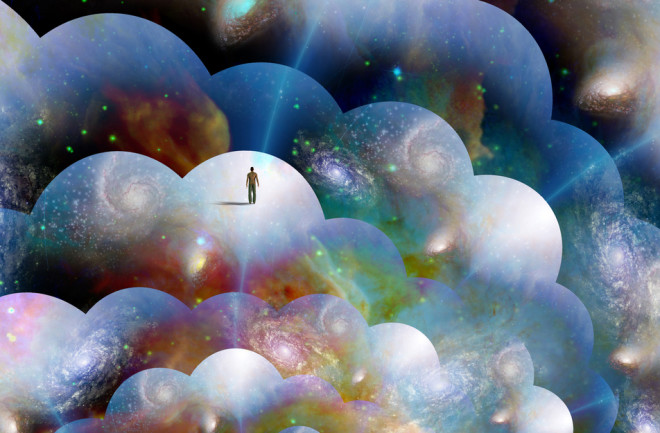One of the great questions for humanity is whether we are alone in the universe. Indeed, astrobiologists appear tantalizingly close to being able to spot the signs of life on other Earths — should it exist elsewhere — using modern observatories such as the James Webb Space Telescope.
Now a group of astronomers have taken this question further by asking whether life could exist in other universes. In other words, they want to know whether we are alone in the multiverse. And they have developed a way to explore this question by considering the range of conditions that might exist in other universes.
The question comes about because the fundamental constants that govern physical laws have values that seem perfectly arranged to allow life to emerge.
For example, carbon atoms form inside stars by the fusion of three helium nuclei. But the simultaneous collision of three particles seems so improbable that carbon ought to be unlikely to form in any great quantity.
Resonant Frequency
In 1954, the astronomer Fred Hoyle reasoned that since there is so much carbon around — life on Earth is made of the stuff—there must be a mechanism that promotes its formation inside stars. In this way, he predicted the famous Hoyle resonance which increases the likelihood of triple collisions and the abundance of carbon by several orders of magnitude. Physicists soon began to look for, and almost immediately found, this resonance.
The curious thing about this resonance is that it is only possible because various fundamental constants take precise values, almost as if they have been fine-tuned to make carbon.
Cosmologists have not discovered any reason for this fine tuning, leading them to suggest that these constants could easily take any other value, perhaps in other universes. But because of this, in these places, humans wouldn’t have evolved to observe it. This is called the anthropic principle, the idea that humans can only have evolved in a universe with fundamental constants that allow this evolution.
All this leads to the idea of a multiverse — that other universes can exist with fundamental constants that are different from those in our universe.
Now McCullen Sandora at the Blue Marble Space Institute of Science in Seattle and colleagues ask whether life could have evolved in any of these other universes and if so, what range of conditions would support it.
In their current work, they investigate the way nuclei form inside stars and the relative ratios of the different elements that stars leave behind when they die. This mix forms the building blocks of a new generation of planets.
Sandora and co look at the amount of metal produced inside stars compared to other elements; at the Hoyle resonance and how much carbon it might produce in other universes; and at the stability of isotopes to see how long important elements sit around before decaying.
In each case, the team investigate how different these properties can be in other universes, or indeed in other parts of our own universe, while still allowing the emergence of Earth-like life.
Their answers place interesting limits on where life can emerge. They conclude that carbon levels must be just about right — too much or too little makes life much less likely. “Our results indicate that carbon-rich or carbon-poor planets are uninhabitable,” say Sandora and co.
Information carriers
They say the amounts of other elements are less important. “Life does not depend on nitrogen abundance too sensitively,” they say. “We also find suggestive but inconclusive evidence that metal-rich planets and phosphorus-poor planets are habitable.”
Sandora and co’s work is part of a bigger effort to map the conditions that make Earth-like life possible. They have already looked at the types of stars that allow photosynthesis on suitably positioned planets, how many Earth-like planets might form and so on.
It’s a bold project with predictions that will be hard to test, even if the range of conditions it explores exist elsewhere in our own cosmos.
Like much thinking about extraterrestrial life, it adopts a narrow definition of life, built on the carbon-based lifeforms found on Earth.
But more general definitions of life are possible. For example, some researchers think of life in terms of the information it transmits from one generation to the next via the process of evolution. In that sense, life is an evolved system for storing, processing and transmitting information.
That puts a different perspective on life. Characterizing universes in which this kind of informaiotn transmission can take place might be a useful jape for astrobiologists with time on their hands.
Ref: Multiverse Predictions for Habitability: Element Abundances : arxiv.org/abs/2302.10919
